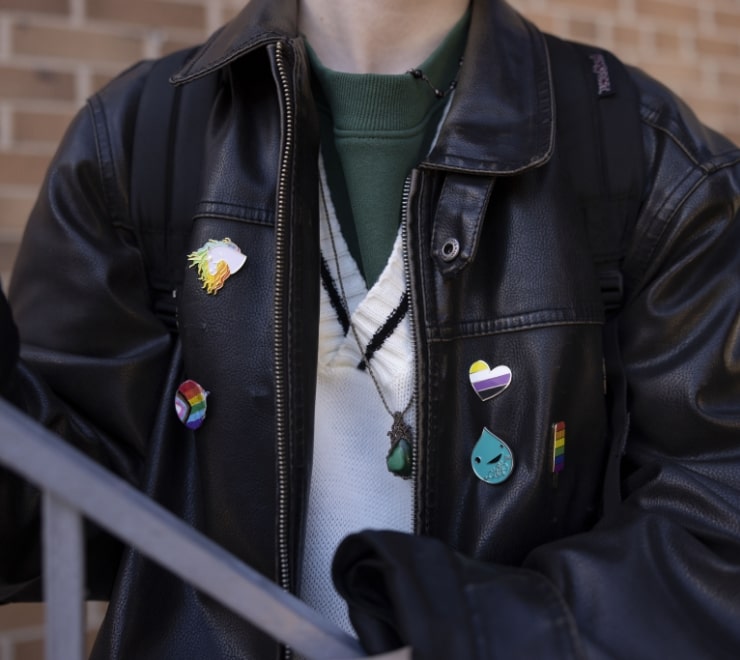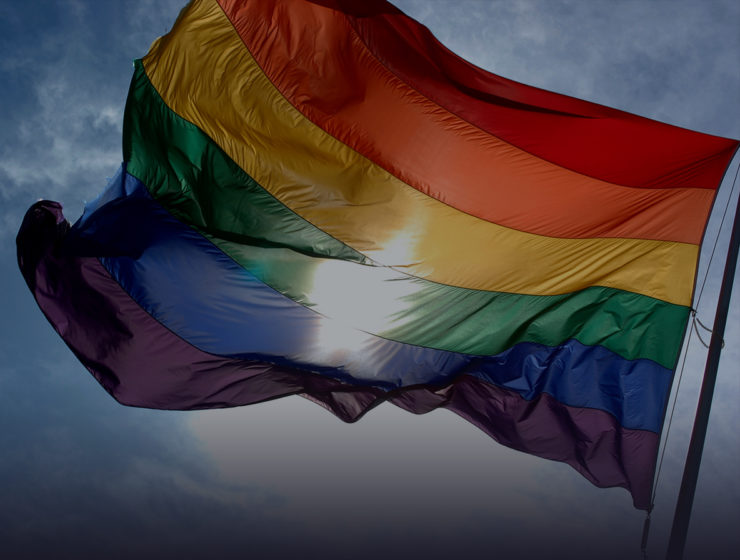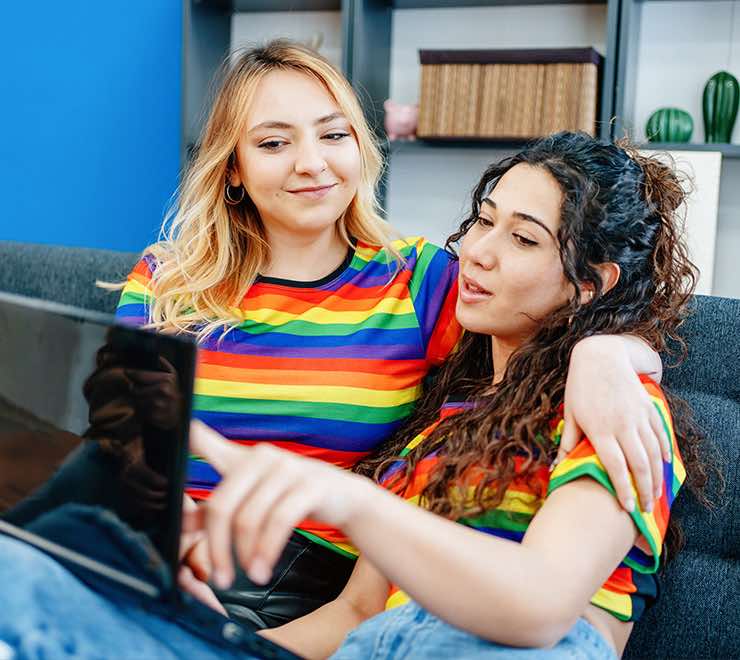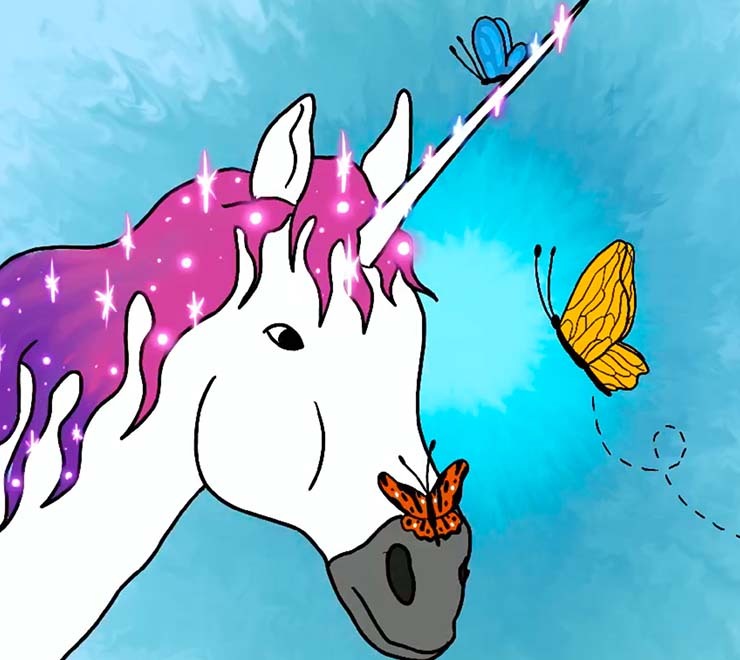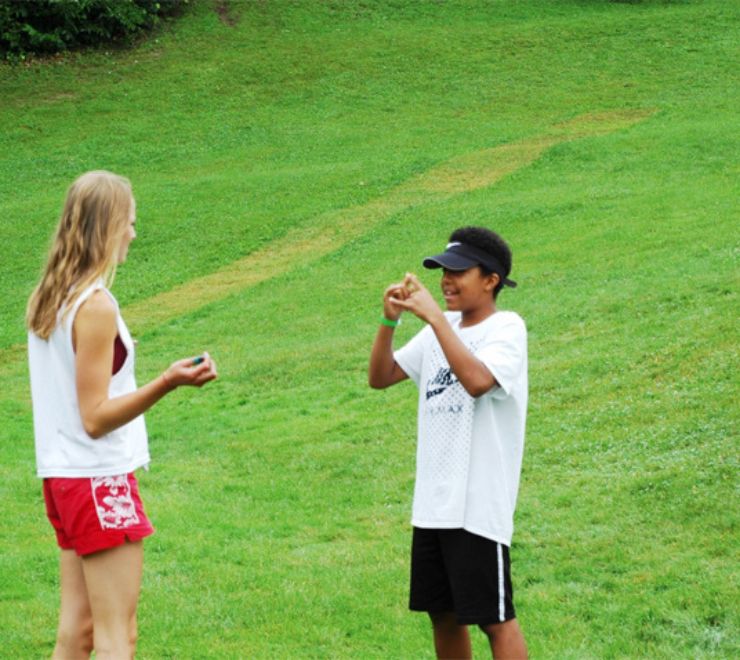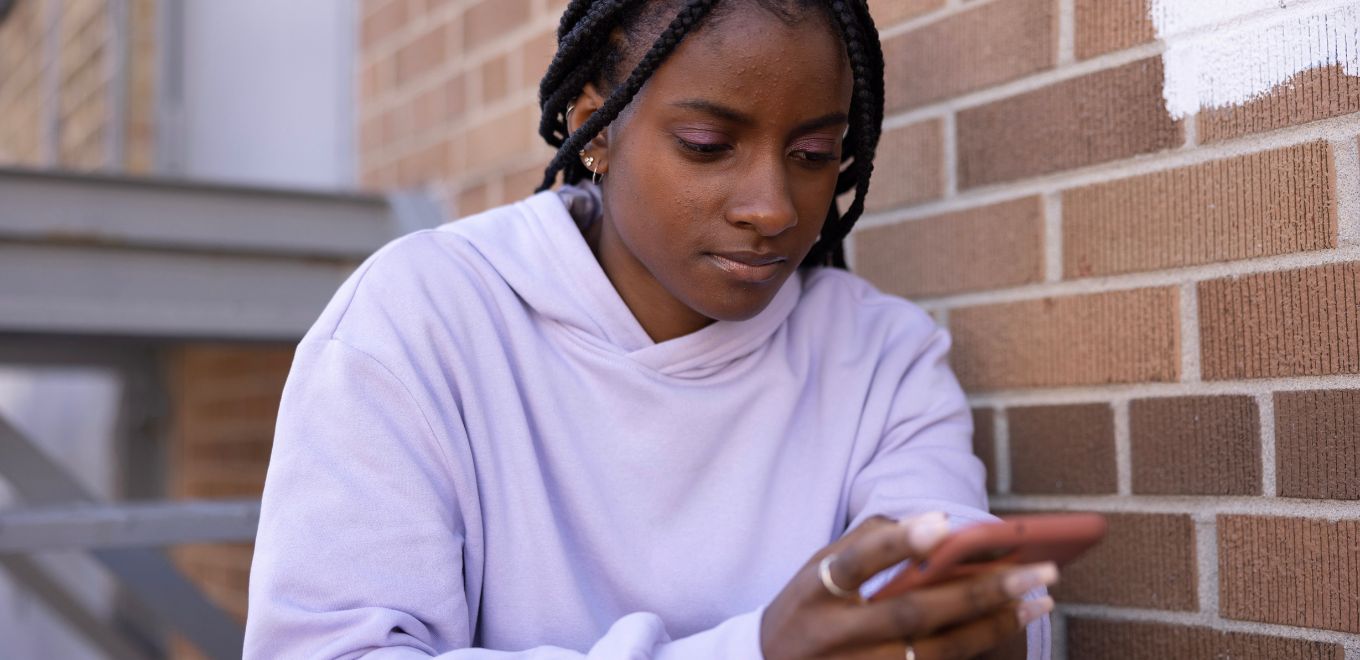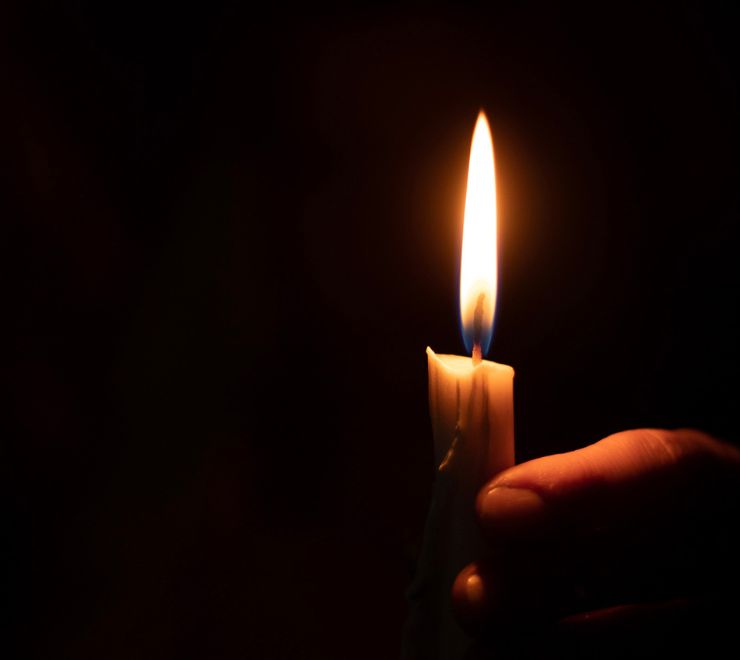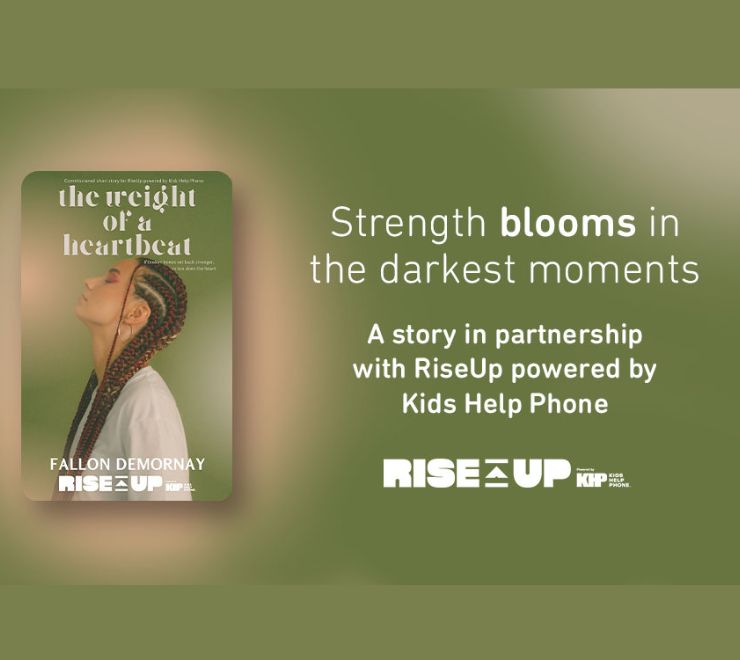2SLGBTQ+ is an acronym that stands for Two-Spirit, Lesbian, Gay, Bisexual, Transgender, Queer or Questioning and additional sexual orientations and gender identities. Here, Kids Help Phone shares information about sexual orientations, gender identities and commonly used terms to better understand yourself and those around you. Any and all combinations of sexual orientations and gender identities are possible and unique to each individual. This page is for anyone, however you identify.
Find your community
Kids Help Phone knows that while you may use any of — or even a combination of — the words under the 2SLGBTQ+ umbrella to describe yourself, it doesn’t necessarily mean that you feel like a part of the 2SLGBTQ+ community as a whole, and that’s OK. You also don’t need to choose any identifiers or labels until and if / when you’re ready. We support you in using the language that feels best for you.
What is sexual orientation?
Sexual orientation describes the way a person feels toward people of a particular (or more than one) gender physically, sexually, romantically and / or emotionally.
For example, one sexual orientation is gay, which means being any combination of physically, sexually, romantically and / or emotionally attracted to people of the same gender or gender identity. Another sexual orientation is heterosexual or straight, which means being any combination of physically, sexually, romantically and / or emotionally attracted to people of a different gender. You can read about many more sexual orientations below!
What is gender identity?
Gender identity describes a person’s internal and individual experience of gender. A person’s gender identity may be the same as or different from their assigned sex at birth. It can be a person’s sense of being a woman, man, both, neither or anywhere along the gender spectrum. (This definition is informed by The 519’s Glossary of Terms).
For example, people whose gender identities match the sex they were assigned at birth are cisgender. People whose gender identities are different than the sex they were assigned at birth may use the word transgender (trans) or another term they feel more aligned with. Check out the gender identity section below for more identities.
What’s the difference between sex and gender?
Sex is a term that’s usually used to talk about a person’s biology, or what body parts are used to assign their sex at birth (i.e. which visible sex organs a person is born with, like a penis or a vulva).
Gender is a term that’s usually used to talk about how a person feels inside (i.e. if a person feels like a woman, a man, both, neither or anywhere along the gender spectrum). The way a person’s gender is expressed can involve things such as the name or pronouns they use (e.g. he, she, they, etc.), the clothing they wear and many other things.
What does 2SLGBTQ+ stand for?
Sexual orientations and gender identities that aren’t heterosexual or cisgender are often described by the acronym 2SLGBTQ+ (or a variation of this acronym). 2SLGBTQ+ stands for:
2S – Two-Spirit (or 2 Spirit or 2S): an important term within some Indigenous cultures and for some Indigenous people, meaning a person with both a feminine and a masculine spirit living in the same body. This is often used to describe sexual orientation, gender identity and / or spiritual identity.
L – Lesbian: a person who identifies as a woman who is physically, sexually, romantically and / or emotionally attracted to other women and who identifies as lesbian.
G – Gay: a person who identifies as a man who is physically, sexually, romantically and / or emotionally attracted to other men and who identifies as gay. Gay is also used as a broad term to describe people attracted to someone of the same gender.
B – Bisexual / Bi: a person who is physically, sexually, romantically and / or emotionally attracted to people of their own and other genders and who identifies as bisexual (bi). Some people may prefer bi+ to honour their attraction to more than one gender.
T – Transgender / Trans: a term often used by people whose gender identity differs from the sex they were assigned at birth. People whose gender identity falls outside of the gender binary (the idea that there are only two genders — man and woman) may also call themselves trans. It’s up to each individual to choose how they want to identify (in other words, no one else can decide if / when a person is or isn’t trans). Other terms to describe gender identity that may be used by some people include genderqueer, gender fluid, gender non-conforming, non-binary and androgynous.
Trans is not a sexual orientation — it’s a gender identity. “T” (for transgender / trans) is grouped with the sexual orientations in the 2SLGBTQ+ acronym for many reasons, including shared civil and human rights activism and similar experiences of discrimination.
Q – Queer: a broad term that includes all sexual orientations and gender identities within the 2SLGBTQ+ community, including those who don’t identify with any other identity in the 2SLGBTQ+ acronym. The term queer can be both positive and negative. Historically, queer was used as an insult, but it has been reclaimed by some folks in the 2SLGBTQ+ community to self-identify in a more positive and empowering way.
Q – Questioning: some people may feel unsure about their sexual orientation and / or gender identity and describe themselves as questioning. They may be questioning for a period of time, or continue to be questioning throughout their lives.
+ (Plus): a way to include additional sexual orientations and gender identities under the 2SLGBTQ+ umbrella, including the terms listed below. For some, the plus stands for love and acceptance.
What are some other terms to know?
2SLGBTQ+ is only one of the acronyms used to describe the diverse communities of people who don’t identify as heterosexual and / or cisgender. To better represent this diversity, some people prefer other acronyms, including 2SLGBTQIA, which stands for Two-Spirit, Lesbian, Gay, Bisexual, Transgender, Queer, Questioning, Intersex, Androgynous and Asexual. It’s important to remember that no one else can decide how you identify and we encourage you to use the language that feels the best for you.
Sexual orientations
Asexual (ace): a person who doesn’t experience or rarely experiences physical attraction to other people, but may be emotionally attracted to others.
Demisexual: a person who experiences sexual attraction typically only after developing a deep and emotional connection with someone.
Gray asexual: a person who may identify strongly with asexuality, but doesn’t feel like it’s the correct word for them. This may include feeling sexual attraction infrequently and / or with no desire to act on it, confusing or ambiguous feelings of sexual attraction or not feeling connected to the concept of sexual attraction.
Pansexual (pan): a person who experiences sexual, romantic, physical, emotional and / or spiritual attraction to people regardless of gender identity.
Gender identities
Agender: a person who doesn’t identify with any gender, or identifies as being genderless. Their gender identity may live outside of the gender binary. Some agender people may use this identity trans to identify themselves, but not all.
Androgynous (androgyne): a person whose gender expression (e.g. clothing, hairstyle, etc.) doesn’t fall into the gender binary, or falls somewhere in between masculine and feminine.
Cisgender: a person whose gender identity and gender expression match the sex they were assigned at birth.
Gender fluid: a person whose gender identity and gender expression are not static, and can shift with time and / or circumstance.
Genderqueer: a person who identifies as neither, both or a mix of man and woman. Individuals who identify as genderqueer may or may not also identify as trans.
Non-binary: a person who doesn’t accept a society that only acknowledges the gender binary of man and woman and defines their gender outside of those norms. People who are non-binary may identify as having no gender, feel in between genders or have a gender that’s not always the same. Individuals who identify as non-binary may or may not also identify as trans.
More terms to learn about
Allyship: practising allyship means being in solidarity with and actively supporting the rights and safety of members of the 2SLGBTQ+ community, even if you don’t identify as a part of the community. Being an ally means taking action and demonstrating a commitment to promote inclusivity and create systemic change on an ongoing basis.
Aromantic (aro): aromantic is a romantic orientation (who a person is emotionally and / or romantically attracted to). Aromantic describes a person who doesn’t experience or rarely experiences emotional attraction (feelings such as love, connection, etc.) to others.
Intersex: intersex describes when a person is born with both male and female sex organs or other sexual characteristics. Some intersex individuals are assigned a sex at birth that they’re raised as, which may or may not fit with how they view their gender identity.
Polyamory: a type of relationship style in which individuals have intimate relationships with more than one person at once. This happens with the full knowledge and consent of all partners involved.
Romantic orientation: romantic orientation refers to how people are emotionally and / or romantically attracted to others (feelings such as love, connection, etc.). A person’s romantic orientation may be the same as, or different than, their sexual orientation.
If you have any questions about sex, gender, identity, terms related to 2SLGBTQ+ communities or anything else, you can talk to someone you trust, including a parent / caregiver, friend or Kids Help Phone’s professional counsellors and trained, volunteer crisis responders.




